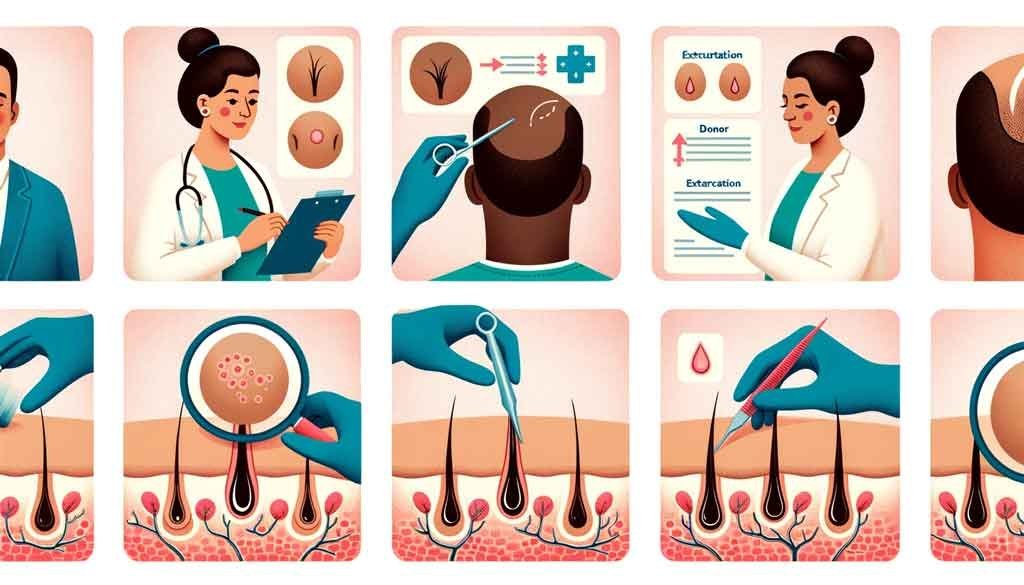You're not alone in your fight against hair loss. Are you considering a hair transplant? You've got this. Our guide is here to boost your confidence and success. Learn about different procedures, post-care tips, and the satisfaction of folks like you. It's not just about hair; it's about reclaiming your self-esteem. Dive in, and let's explore how you can thrive on your hair transplant journey.
Table of Contents

Factors Influencing Transplant Success
Your hair transplant's success hinges on several factors, including your surgeon's skills, the technology used during surgery, and commitment to follow the prescribed treatment and care. You're not alone in this journey; we're all together.
Choosing the right clinic with an experienced surgeon who uses advanced technology is your first step. They'll personalize a plan for you, considering your specific needs. But it doesn't stop there. You've got a part to play, too. Make sure you're suitable for the procedure and be ready to support the treatment. Follow the post-op instructions carefully, as it's crucial for a successful recovery. Remember, it's a joint effort; together, we can achieve the results you've been dreaming of.
Understanding Types of Hair Transplants
In the realm of hair restoration, it's important to understand that you'll likely encounter two main types of hair transplant procedures: Follicular Unit Strip Surgery (FUSS or FUT) and Follicular Unit Extraction (FUE).
- FUSS or FUT:
- This involves removing a strip of your scalp, usually from the back of your head, and transplanting it to the balding area.
- While this method might leave a scar, graft survival is often more successful.
- FUE:
- In this technique, individual hair follicles are extracted and transplanted.
- It's more time-consuming but leaves minimal scarring.
Post-Care for Transplant Success
After a hair transplant, you must adhere to post-operative care guidelines to ensure the procedure's success. It's essential to consider your scalp as a delicate garden where new hair seeds have been sown. These need your attentive care and nurture to flourish.
To help you remember the vital steps, here's a handy table:
| Do's | Don'ts |
|---|---|
| Keep your scalp clean | Don't rub or scratch the treated area |
| Stay hydrated | Avoid intense physical activities for the first week |
| Eat a balanced diet | Limit alcohol and smoking |
| Follow medication instructions | Avoid direct sun exposure |
Your commitment to post-care is a crucial part of your journey towards belonging to the community of those who've successfully restored their hair. You're not alone in this journey; we're with you every step of the way.
Graft Survival and Aesthetic Appeal
Ensuring hair grafts' survival and aesthetic appeal is the next crucial step towards a successful hair transplant. It's not just about getting the grafts to survive but also making sure they look natural and appealing.
Here's what you need to know:
- *Graft survival*:
- The survival rate of grafts is usually around 90%, but it can vary.
- The more you follow the aftercare instructions, the higher your chances of successful graft survival.
- *Aesthetic appeal*:
- The goal is a natural look. Hair should be placed in the direction of your existing hair and blend well.
- The skill of the surgeon plays a significant role in achieving this.
Evaluating Patient Satisfaction and Results
Evaluating your hair transplant's success isn't just about the physical results; it's also about your overall satisfaction with the procedure. Remember, you're part of a community that values self-confidence and personal well-being. Assessing whether the new hair growth meets your expectations and enhances your self-image is essential. You should feel a renewed sense of belonging and acceptance post-procedure.
Post-treatment, you might experience varied emotions; that's normal. It's important to share your feelings with your medical team. Your happiness matters, and they are there to support you. If you're content with your new look and feel good about yourself, that's a successful hair transplant. Always remember, the journey of hair restoration is a shared experience. Your satisfaction is a testament to the success of the procedure.
Frequently Asked Questions
What Are Some Common Side Effects or Risks Involved in Hair Transplant Procedures?
You might experience common side effects after a hair transplant, like swelling, itching, or discomfort. There's also a risk of infection or scarring. But remember, you're not alone, and these effects are usually temporary.
How Much Does a Hair Transplant Procedure Typically Cost, and Does Insurance Cover Any Part of It?
The cost of a hair transplant can vary widely, often ranging from $4,000 to $15,000. Generally, insurance doesn't cover it since it's considered cosmetic. You must discuss this with your insurance provider.
How Long Does the Complete Hair Transplant Procedure Take, and What Is the Recovery Time?
Your hair transplant procedure duration can vary, generally taking 4-8 hours. Recovery time is individual, but you'll likely see significant healing within a week. It's about patience, friend, as full results take months.
How Does the Hair Transplant Procedure Affect One's Daily Routine or Lifestyle, Both During and After Recovery?
You'll need to modify your routine during recovery. It's temporary, with minor restrictions like avoiding strenuous activities and sun exposure. After recovery, you'll resume normal activities with a boost in confidence from your new hair.
Can a Hair Transplant Procedure Be Done on Individuals With Different Hair Types and Textures?
You can have a hair transplant regardless of your hair type or texture. It's all about finding a skilled surgeon who understands your unique needs and can achieve the best results for you.
References:
A Systematic Review of the Outcome of Hair Transplantation in Primary Scarring Alopecia
Links:
The Guide to Hair Transplant: Procedure, Recovery, and Results

